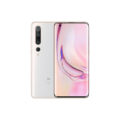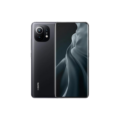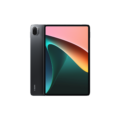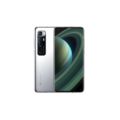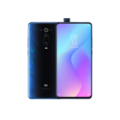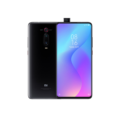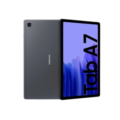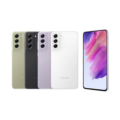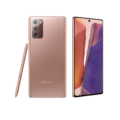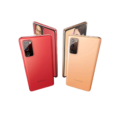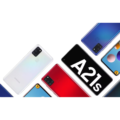Mi Pad 4 Harga Malaysia
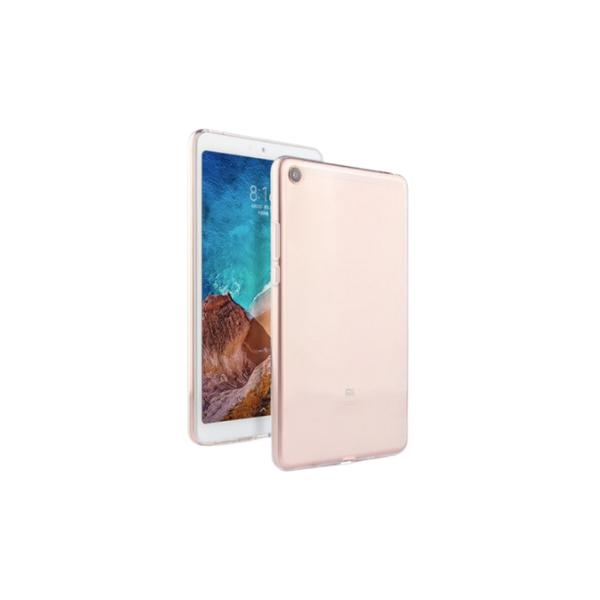

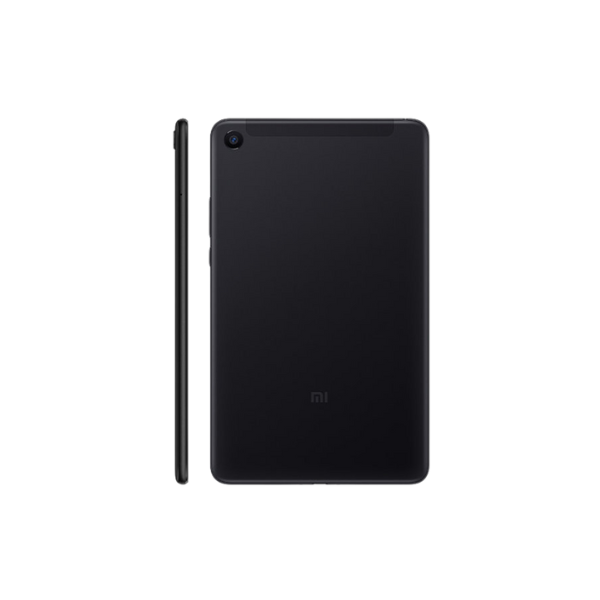
- CPU: Qualcomm SDM660 Snapdragon 660 (14 nm)
- RAM: 3 GB, 4 GB
- Storage: 32 GB, 64 GB
- Display: IPS LCD
- Camera: 13 MP Single Camera
- OS: Android 8.1 (Oreo), MIUI 9
- AnTuTu Total Score: 130.000
Mi Pad 4 Harga Malaysia Spesifikasi Malaysia
General
| Device Type | Tablet |
| Announced | 01 June, 2018 |
| Released | 01 June, 2018 |
| Status | Available |
| Price | RM899 - RM995 |
Design
| Type <strong>Design Type</strong> called form factor refers to a mobile phone's size, shape, and style as well as the layout and position of major components of phone. There are three major form factors seen in mobile phones => bar phones, folding phones and sliding phones. | Bar |
| Dimensions | 200.2 x 120.3 x 7.9 mm (7.88 x 4.74 x 0.31 in) |
| Weight | 200.2 x 120.3 x 7.9 mm (7.88 x 4.74 x 0.31 in) |
| Body Type | Glass front, aluminum back, aluminum frame |
| Colors | Black, Rose Gold |
Network
| 4G Network | 1, 3, 5, 7, 8, 34, 38, 39, 40, 41 |
| SIM <strong>SIM</strong> (Subscriber Identity Module) is a small card that contains mobile network subscriber's account information. This allows the phone using the card to attach to a mobile network. The SIM card is most commonly associated with GSM and UMTS mobile networks. Moving a SIM card from one phone to another allows a subscriber to switch mobile phones without having to contact their mobile network carrier. SIM cards can also be used by a phone to store limited amounts of data, such as phone numbers and text messages. | Nano SIM |
| Dual SIM | No |
Display
| Display Type <strong>Display Technology => </strong> A number of display technologies and types used in mobile phones => TFT (Thin Film Transistor), IPS (In-Place Switching), OLED (Organic Light Emitting Diode), AMOLED (Active-Matrix Organic Light-Emitting Diode), Super AMOLED (an even advanced version of AMOLED), Resistive Touchscreen (Resistive touchscreens contain two layer of conductive material with a very small gap between them which acts as a resistance), Capacitive Touchsceen (Capacitive touchscreen technology consists of a layer of glass coated with a transparent conductor) | IPS LCD |
| Size | 8.0 inches, 185.6 cm2 (~77.1% screen-to-body ratio) |
| Resolution | 1200 x 1920 pixels, 16:10 ratio |
| Display Colors <strong>Display Colors</strong> is refers to the number of different shades of colors that the screen is capable of displaying => 64K colors, 256K colors and 16 million colors, Obviously 16M is highest available range of colors and better than others. | 16 Millions Colors |
| Pixel Density <strong>Pixel Density (PPI)</strong> is refers to the concentration of pixels on a particular display, measured in pixels per inch (ppi). Pixel density is calculated by dividing the diagonal pixel resolution of a display by its diagonal size, higher pixel density better display quality. | (~283 ppi density) |
| Touch Screen | Yes, Multitouch |
Camera
| Rear Camera <strong>Camera</strong> is able to capture photographs and usually videos, The most important characteristics of a camera are the resolution (measured in megapixels), lens focus type (fixed or automatic), higher megapixel cameras are known to capture higher quality photos, but not always a good measurement of the photos quality. | Single Camera 13 MP, f/2.0 |
| Front Camera | 5 MP, f/2.0 |
| Image | 1080p |
| Video | 1080p@30fps |
| Camera Features | Panorama, HDR |
Software
| Operating System <strong>OS => </strong> Every computer system run on a base software called Operating System (OS). Operating System controls all basic operations of the computer (such as smartphone, PDAs, tablet computers and other handheld devices). The Operating System allows the user to install and run third party applications (apps), apps are used to add new functionality to the device. | Android 8.1 (Oreo) |
| User Interface <strong>UI</strong> or user interface of a device is the look and feel of the on-screen menu system. How it works, its color scheme, how it responds to button presses, all of these things are part of the user interface. | MIUI 9 |
Hardware
| Chipset <strong>Chipset</strong> is a group of integrated circuits designed to perform one or a more dedicated functions, often with real time computing constraints, Popular smartphones are equipped with more advanced embedded chipsets that can do many different tasks depending on their programming. | Qualcomm SDM660 Snapdragon 660 (14 nm) |
| CPU <strong>CPU</strong> (Central Processing Unit) mostly known as processors, CPU processes instructions in order to carry out certain functions that make your device operate properly. Processors are often described as the brain of computers, smartphones and tablets, Smartphones and tablets rely on processors to carry out their every task, Processors are an incredibly important factor in selecting any type of computing device, including your smartphone. | Octa-core (4x2.2 GHz Kryo 260 Gold & 4x1.8 GHz Kryo 260 Silver) |
| GPU <strong>GPU</strong> (Graphics Processing Unit) is a single-chip processor designed to rapidly manipulate and alter memory to accelerate the creation of images in a frame buffer intended for output to a display, This includes things such as lighting effects, object transformations, and 3D motion. | Adreno 512 |
| RAM (Memory) <strong>RAM</strong> (Random Access Memory) is a type of computer memory that can be accessed randomly, any byte of memory can be accessed without touching the preceding bytes that allows information to be stored and accessed quickly from random locations. RAM is the most common type of memory found in computer systems, smartphones, tablets and other electronic devices. | 3 GB, 4 GB |
Battery
| Battery Type <strong>Battery Type => </strong> Cell phones run on various kinds of batteries depending on the manufacturer, phone size or shape and features. There are basically four types of cell phone batteries => Lithium Polymer, Lithium Ion, Nickel Metal Hydride and Nickel Cadmium. | Li-Poly (Lithium Polymer) |
| Placement | non-removable |
| Capacity <strong>Battery Capacity</strong> is a measure (typically in Amp-hr) of the charge stored by the battery, and is determined by the mass of active material contained in the battery. The battery capacity represents the maximum amount of energy that can be extracted from the battery under certain conditions. | 6000 mAh |
| Charging | 10W wired |
Connectivity
| Bluetooth <strong>Bluetooth</strong> is a wireless communications technology for exchanging data between mobile phones, headsets, computers and other network devices over short distances without wires, Bluetooth technology was primarily designed to support simple wireless networking of personal consumer devices. | 5.0, A2DP, LE |
| Wi-fi <strong>Wi-Fi</strong> is a popular wireless networking technology using radio waves to provide high-speed network connections that allows devices to communicate without cords or cables, Wi-Fi is increasingly becoming the preferred mode of internet connectivity all over the world. | Wi-Fi 802.11 a/b/g/n/ac, dual-band, Wi-Fi Direct |
| Wi-fi Hotspot | |
| USB | USB Type-C |
| GPS <strong>GPS</strong> The Global Positioning System is a satellite-based radio navigation system, GPS permits users to determine their position, velocity and the time 24 hours a day, in all weather, anywhere in the world, In order to locate your position, your device or GPS receiver must have a clear view of the sky. | GPS, GLONASS, BDS (LTE model only) |
| NFC <strong>NFC</strong> (Near field communication) is a set of standards for smartphones and similar devices to establish peer-to-peer radio communications with each other by touching them together or bringing them into proximity, usually no more than a few inches. | |
| Wireless Charging <strong>Wireless Charging</strong> (Inductive Charging) uses an electromagnetic field to transfer energy between two objects. This is usually done with a charging station. Energy is sent through an inductive coupling to an electrical device, which can then use that energy to charge batteries or run the device. | No |
Media
| Loudspeaker | Yes, with stereo speakers |
| Handsfree | 3.5mm jack |
Pada tahun 2018, peranti Xiaomi telah menerima perhatian besar daripada majoriti orang awam dalam bentuk telefon bimbit.
Xiaomi juga kelihatan lebih memberi tumpuan kepada telefon bimbit daripada tablet yang kini agak perlahan. Namun, itu tidak bermakna Xiaomi telah melupakan warisannya yang asal.
Xiaomi melancarkan tablet Xiaomi Mi Pad 4 pada 25 Jun 2018 dengan mempertahankan reka bentuk skrin warisan dari pendahulunya tetapi dengan nisbah aspek yang lebih tinggi.
Sementara itu, dalam bahagian prestasi, Xiaomi dipercayai mengadopsi cip Snapdragon 660 yang diselaraskan dengan 4GB RAM dan penyimpanan dalaman 64GB.
Untuk mengetahui lebih lanjut mengenai Mi Pad 4, perhatikan ulasan Mi Pad 4 berikut.
Reka Bentuk dan Binaan
1. Reka Bentuk Fizikal
Mi Pad 4 dilancarkan dengan menyediakan dua pilihan warna, seperti hitam dan emas mawar. Dimensi Mi Pad 4 adalah 200.2 x 120.3 x 7.9 mm (7.88 x 4.74 x 0.31 inci). Berat tablet ini adalah 342.5 gram.
Bahan pembinaan badan di bahagian hadapan diperbuat daripada kaca, manakala belakang dan bingkai diperbuat daripada aluminium.
Ciri-ciri lain termasuk dua mikrofon, pembesar stereo, dan port USB-C.
2. Reka Bentuk Skrin
Untuk siri Mi Pad 4, Xiaomi menggunakan skrin jenis panel IPS LCD 8 inci (nisbah skrin-ke-tubuh 77.1%). Saiz ini dianggap cukup sesuai, tidak terlalu besar dan tidak terlalu kecil. Kemudian nisbah aspek adalah 16:10 (ketumpatan 283 ppi).
Skrin tablet Xiaomi ini juga mempunyai resolusi Full HD 1200 x 1920 piksel. Tidak hairanlah ia sangat selesa untuk menonton video atau bermain permainan.
Terutamanya dengan panel IPS LCD, kualiti warna, tahap kecerahan, dan butiran visual adalah jauh lebih baik.
Kamera
Mi Pad 4 mempunyai kamera utama dengan sensor 13 MP dan apertur f/2.0. Kamera ini juga dilengkapi dengan mod HDR dan perekaman video 1,080 piksel, tetapi tidak dilengkapi dengan lampu kilat LED.
Sementara itu, kamera hadapan adalah 5 MP dan menyokong ciri Face Unlock, versi MIUI yang diperkuat dari ciri Android.
Perisian
Sistem operasi adalah MIUI 9 berdasarkan Android 8.1. Antara muka MIUI 9 agak mudah digunakan.
Sistem operasi ini mempunyai banyak ciri menarik seperti pelbagai stiker dan animasi, pelbagai pilihan panel pemberitahuan, pintasan untuk aplikasi yang kerap digunakan, dan lain-lain.
Slot kad SIM hanya tersedia untuk nano-SIM. Tablet ini juga tidak dilengkapi dengan NFC dan Radio atau cap jari.
Sambungan dilengkapi dengan ciri Wi-Fi (Wi-Fi dan Wi-Fi LTE), Bluetooth, dan GPS (GLONASS dan BDS untuk model LTE). Untuk rangkaian LTE, Mi Pad 4 menyokong Wi-Fi IEEE 802.11 a/b/g/n/ac dan boleh disambungkan kepada rangkaian 2.4 atau 5 GH.
Dengan spesifikasi ini, aktiviti dengan rangkaian Internet tidak akan menghadapi masalah yang ketara. Anda boleh melayari Internet, panggilan video, mengalirkan, dan malah bermain permainan dalam talian dengan lancar tanpa sebarang masalah.
Prestasi
Xiaomi Mi Pad 4 menggunakan cip Qualcomm SDM660 Snapdragon 660 (14 nm) yang disokong oleh piawai komunikasi akses data tanpa wayar LTE. Cip ini dapat menjalankan semua aplikasi dan permainan Android dengan lancar dan cepat.
Cip ini adalah salah satu yang terbaik pada tahun 2018 dan telah membuktikan prestasi yang stabil. Qualcomm mempersembahkan teknologi AI terkini pada pemproses ini agar dapat meningkatkan prestasi sebanyak 10 hingga 20%.
Selain itu, cip ini disertai dengan CPU Octa-core (4×2.2 GHz Kryo 260 Gold & 4×1.8 GHz Kryo 260 Silver), jadi peranti ini mempunyai kelajuan 2.2 GHz. Bagi kualiti grafik, ia menggunakan GPU Adreno 512.
Selain dari stabil, tentulah prestasinya cepat dan kualiti grafiknya jauh lebih baik daripada pendahulunya.
Dengan pilihan RAM 3GB/32GB dan 4GB/64GB, pasti bahawa aktiviti multitugas atau bermain permainan dengan tablet LTE Xiaomi ini bebas dari masalah.
Hayat Bateri
Bateri Mi Pad 4 menggunakan bateri Li-Po yang terpasang dengan kapasiti 6000 mAh yang tidak dapat dibuka. Saiz kuasa ini tidak terlalu besar, kerana Mi Pad 4 Plus sendiri mempunyai kapasiti 8620 mAh.
Untuk pengecasan, Mi Pad 4 hanya dilengkapi dengan pengecas biasa 5V/2A yang menggunakan kabel 10W, jadi ia mengambil masa yang agak lama untuk mengecas bateri hingga penuh 100 peratus, lebih kurang 4 hingga 5 jam.
Skrin IPS LCD membantu menjimatkan tenaga bateri ketika menggunakan tablet LTE ini.
Harga
Harga untuk Xiaomi Pad 4 di Malaysia, harga patokannya berdasarkan saiz penyimpanan dalaman.
Penyimpanan 64GB Wi-Fi LTE dan Wi-Fi, harga bermula dari RM899.00, nilainya sama dengan $200.67
Penyimpanan 32GB Wi-Fi LTE dan Wi-Fi bermula dari RM995.00, nilainya sama dengan $222.10
Itulah spesifikasi Mi Pad 4, dengan harga tablet yang berpatutan dan cukup murah, Spesifikasi ini sudah termasuk superior dari pelbagai aspek.
Anda boleh periksa dan melawat di xiaomi mi pad 4 | lazada

